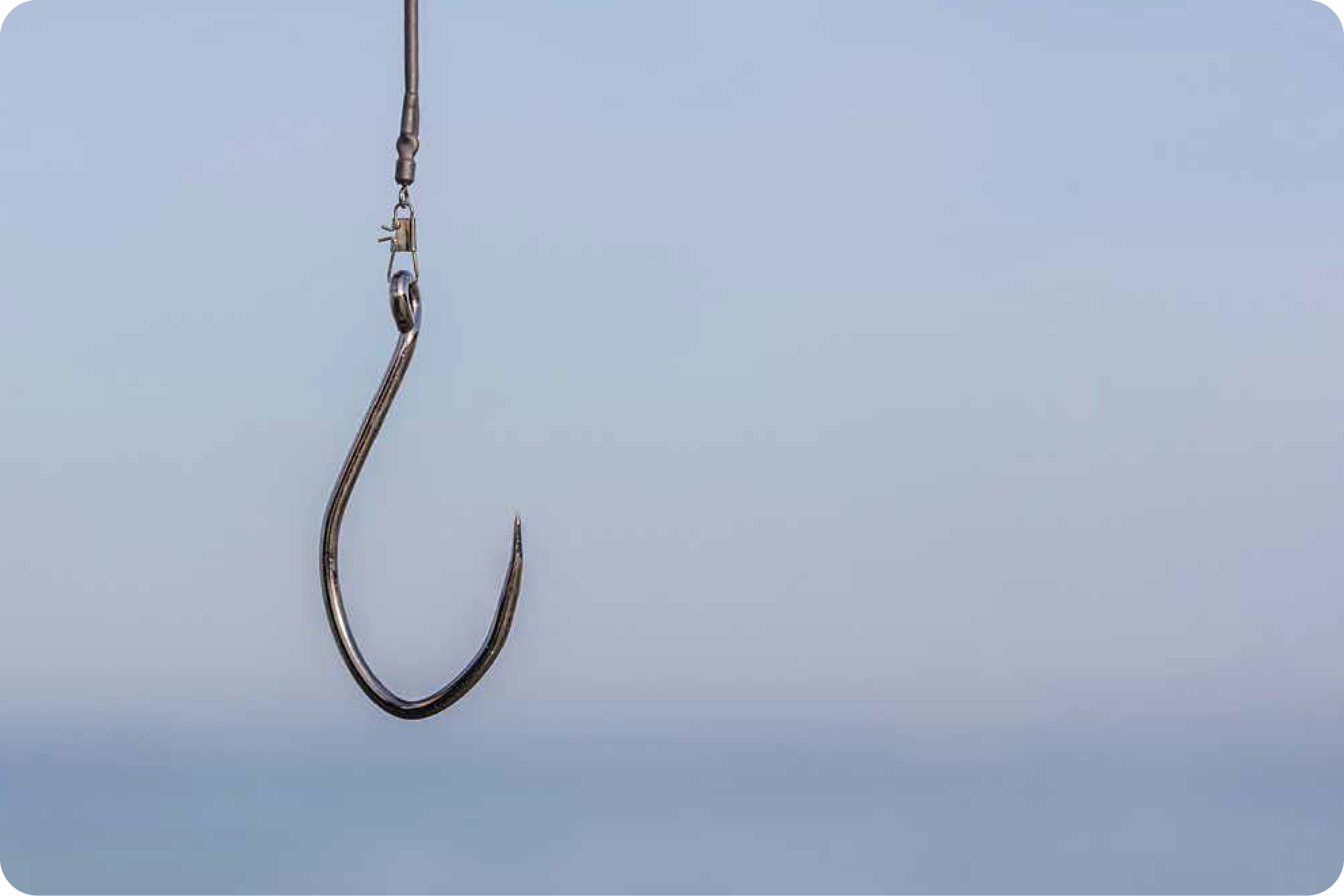
ADJUST GEAR AND TACKLE
USE SMALLER HOOK SIZES
Larger hooks are related to more severe injuries, increased probability of eye injury, and decreased probability of survival. Recommended gap width of 15mm or smaller (e.g., 3/0 ‘Octopus’ hook) is recommended.
AVOID TREBLE HOOKS
Treble hooks are less likely to cause eye injury, but are related to more severe injuries, and decreased probability of survival. Smaller, non-retainable fish (e.g., Chinook salmon <62 cm) are particularly vulnerable.
AVOID TANDEM HOOK POINT SETUPS
Multi-hook setups (e.g., when using bait or artificial lures) are prone to multiple hooking locations on the fish’s body, which increases likelihood of a lethal hooking location.
AVOID FLASHERS
In-line flashers cause higher metabolic rates in fish while landing, and prolong the metabolic recovery after their release, meaning the fish are less likely to be able to rapidly after release and are therefore at a higher predation risk. This risk is even greater for female salmon vs. males).
READ THE RESEARCH
The Sport Fishing Institute of BC is working with researchers from the University of British Columbia to identify, formalize, and promote Best handling practices to help ensure the survivability of released fish including Chinook and Coho salmon. Please read the research reports for full information on these studies and findings.

Developed by the Sport Fishing Institute of BC and University of British Columbia
Supported by the British Columbia Salmon Restoration and Innovation Fund


